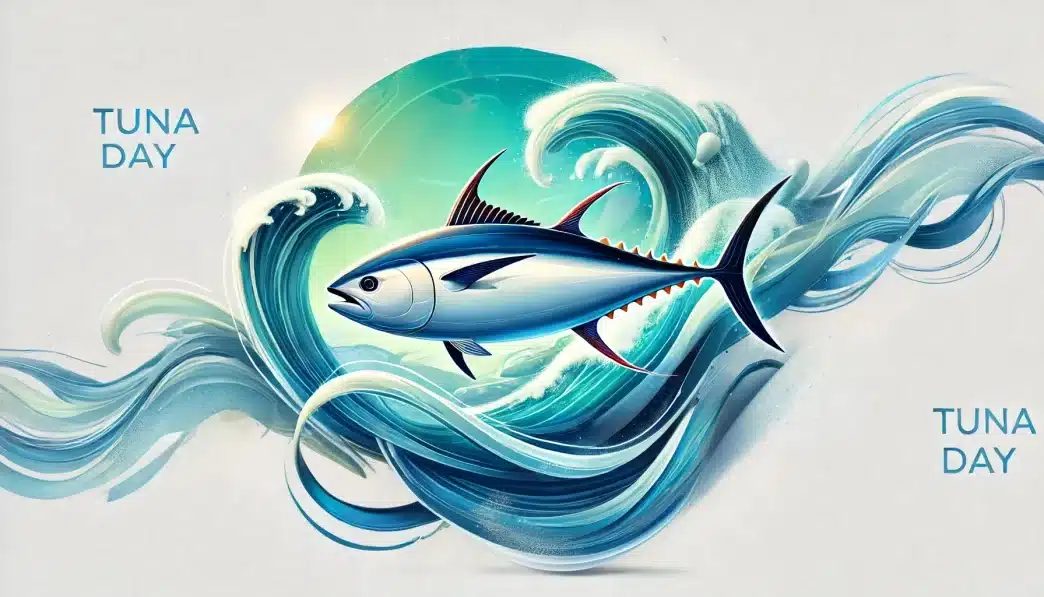What is World Tuna Day?
World Tuna Day is observed annually on May 2 to raise awareness about the importance of sustainable tuna fishing and the role tuna plays in marine ecosystems and global food security. Established by the United Nations in 2016, this day emphasizes the need for responsible fishing practices to prevent overfishing and ensure the long-term survival of tuna populations. Tuna is one of the most commercially valuable fish species, supporting millions of people worldwide through the fishing industry, trade, and coastal economies. However, unsustainable fishing practices pose a severe threat to tuna stocks, making conservation efforts more urgent than ever.
History and origin
World Tuna Day was established to address growing concerns over tuna overfishing, which has led to significant declines in several tuna species. Recognizing the economic, ecological, and nutritional importance of tuna, the United Nations officially designated May 2 as World Tuna Day in 2016 to encourage international cooperation in managing tuna stocks.
Tuna is a highly migratory species, meaning that it moves across international waters, making global collaboration essential for its conservation. Various organizations, including the Western and Central Pacific Fisheries Commission (WCPFC) and the Marine Stewardship Council (MSC), play key roles in regulating tuna fisheries and promoting sustainable practices. World Tuna Day serves as a reminder of the urgent need to balance human consumption with environmental conservation to prevent tuna species from becoming endangered.
Who participates in World Tuna Day?
- Environmental organizations: Groups dedicated to marine conservation use this day to advocate for sustainable fishing and educate the public about tuna conservation.
- Fishing communities and industries: Fishermen and seafood companies participate in discussions and initiatives to promote responsible fishing methods.
- Governments and policymakers: Officials implement and reinforce international regulations to ensure sustainable tuna fisheries.
- Consumers and the general public: Individuals are encouraged to choose sustainably sourced tuna products and raise awareness about the importance of responsible fishing.
- Restaurants and seafood retailers: Businesses promote responsibly sourced tuna through special campaigns and menu options.
Slogans and themes
World Tuna Day focuses on sustainability, marine conservation, and responsible seafood consumption. The day highlights the delicate balance between economic reliance on tuna fisheries and the need to protect ocean biodiversity. “Our Tuna, Our Future” and “Sustainable Seas, Sustainable Tuna” are commonly used themes, reinforcing the message that future generations depend on the responsible management of tuna stocks today. Other campaigns encourage consumers to check for sustainability certifications when purchasing tuna products, making informed choices that support ethical fishing practices.
Colors, symbols, and patterns
Colors
- Blue and white: Represent the ocean and marine life, symbolizing the natural habitat of tuna and the importance of conservation.
- Green: Reflects sustainability and environmental responsibility.
- Silver: Represents tuna’s economic value and the seafood industry’s reliance on its trade.
Symbols
- Tuna fish icon: Represents the species itself and highlights its significance in marine biodiversity.
- Fishing hook or net: Symbolizes the fishing industry and the importance of responsible fisheries management.
- Globe with ocean waves: Emphasizes the international cooperation needed to protect tuna populations.
Patterns
- Wave motifs: Represent the ocean environment and the importance of marine conservation.
- Fish scales: Symbolize biodiversity and the need for sustainable fishing practices.
- Circular designs: Reflect the idea of global responsibility and continuous efforts toward sustainability.
How to observe World Tuna Day
- Educate yourself and others: Learn about the challenges facing tuna populations and share this knowledge through social media, educational events, or community discussions.
- Support sustainable brands: Purchase tuna products certified by Marine Stewardship Council (MSC) or Friends of the Sea to encourage responsible fishing.
- Participate in conservation activities: Join local or global initiatives focused on protecting marine environments, such as ocean clean-ups and advocacy campaigns.
- Attend events and webinars: Engage with discussions hosted by environmental organizations, government agencies, and the fishing industry.
- Reduce seafood waste: Be mindful of how you consume seafood by avoiding over-purchasing and reducing waste to lessen environmental impact.
Most used hashtags
- #WorldTunaDay
- #SustainableFishing
- #SaveOurOceans
- #TunaConservation
- #ResponsibleSeafood
Why is World Tuna Day important?
World Tuna Day serves as a critical reminder of the need to balance human consumption with environmental conservation. As one of the most widely consumed fish species, tuna plays an essential role in global food security. However, excessive fishing practices have led to declining tuna populations, which could disrupt oceanic ecosystems and threaten the livelihoods of millions of people who depend on the fishing industry.
Tuna is a keystone species in marine environments, meaning its decline could have cascading effects on ocean biodiversity. By promoting sustainable fishing practices and raising consumer awareness, World Tuna Day helps ensure that future generations can continue to benefit from healthy tuna populations. Governments, environmental organizations, and seafood consumers all have a role in protecting our oceans and making responsible choices to preserve this valuable species.
Features
Contact Info
May 2: Tuna Day
Why do you keep falling for the same type?
Read the article Lovemaps: the hidden blueprint of our love.

